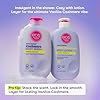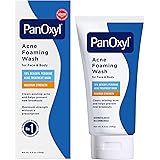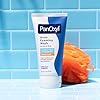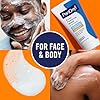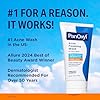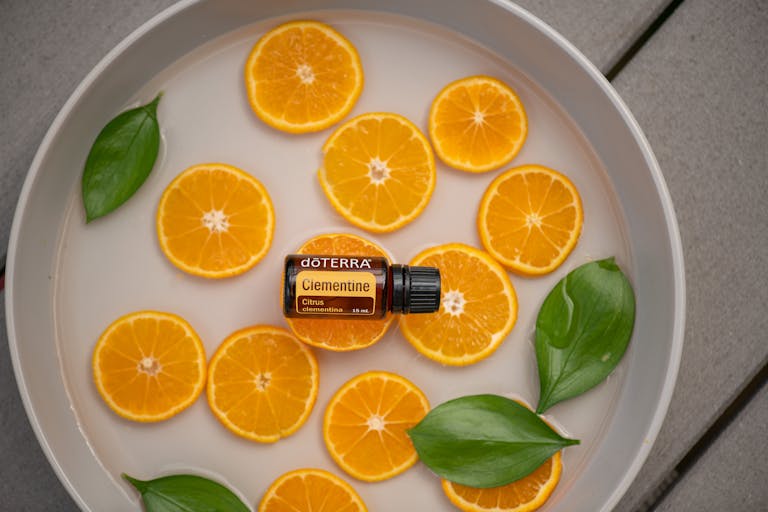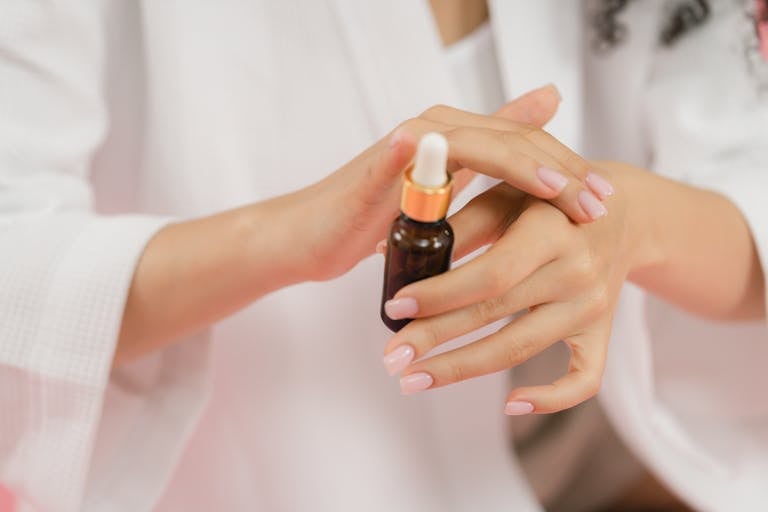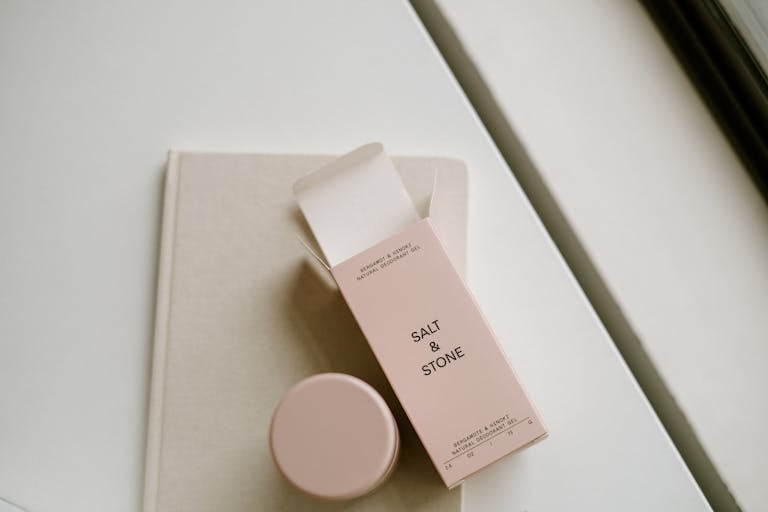Choose the Right Natural Sunscreen for You
As you enjoy the sun under clear blue skies, your skin and the sun’s rays are closely interacting. This silent interaction, without the right sunscreen, may harm your skin or speed up aging. Choosing a mineral sunscreen means you’re protecting your skin thoughtfully. It’s not just about avoiding sunburn; it’s about caring for your skin with a non-toxic sunscreen.
No matter if your skin is delicate or tough, there’s an ideal eco-friendly sunscreen for you. Such a sunscreen will fit your body’s needs, protect the environment, and meet your health values. That’s what organic sunscreen offers: a safe, comforting shield from damaging UV rays.
Key Takeaways
- Finding a sunscreen that provides protection while also being gentle on sensitive skin is paramount.
- The benefits of mineral sunscreen extend beyond UV defense to include environmental responsibility.
- An eco-friendly sunscreen choice shows consideration for the planet’s coral reefs and aquatic health.
- Understanding the specifics of non-toxic sunscreen can empower your decisions for skin health.
- Opting for organic sunscreen means choosing products with your wellness and the earth’s in mind.
Why Sunscreen is Non-Negotiable in Your Skincare Routine
One part of your daily routine that must stay is protecting your skin well. Using the right natural sunscreen helps avoid sunburn and fights harmful ultraviolet (UV) rays. If you don’t use it, you risk more than just surface skin issues.

The Health Risks of UV Exposure
UV rays pose a serious threat to health. They can cause problems like sunburn and more serious issues such as skin cancer. UVA and UVB rays, though unseen, greatly affect your health.
UVA rays, especially, go deep into your skin. They damage the collagen and elastin, which can make you look older before your time.
Photoaging: Protecting Your Skin’s Youthful Appearance
Photoaging shows deeper damage than just surface changes. Protecting your skin with an SPF 30 sunscreen or stronger keeps away wrinkles, dark spots, and rough skin. By choosing the best natural sunscreen for your routine, you keep your skin looking young. And you’re investing in healthier skin for the future too.
| Effects of UV Radiation | Prevention with Natural SPF 30 Sunscreen |
|---|---|
| Sunburn (UVB) | Blocks harmful rays to prevent burning |
| Precancerous cell damage (UVB) | Minimizes the risk of skin cancer development |
| Collagen and elastin degradation (UVA) | Preserves skin elasticity and firmness |
| Photoaging (UVA & UVB) | Significantly reduces signs of aging |
Demystifying Natural Sunscreens: What You Need to Know
Seeing organic sunscreen more often? Ever wonder what it means for your skin and the planet? To choose wisely, know the difference between chemical and natural sunscreens. It’s all about your health and saving our reefs.
The Definition of “Natural” in Sunscreen
Finding the right sunscreen can be tricky with so many chemical options out there. Reef safe sunscreen and eco-friendly sunscreen mean they use mineral ingredients. These create a shield against the sun without harming our oceans. More people are choosing these for their eco-conscious benefits.
The Active Ingredients of a Natural Sunscreen
Looking for mineral sunscreen? Search for zinc oxide or titanium dioxide in the ingredients. These minerals reflect harmful UV rays off your skin. This is different from chemical sunscreens that absorb UV rays and might release harmful substances.
| Mineral Sunscreen Features | Benefits |
|---|---|
| Zinc Oxide/Titanium Dioxide | Safe, effective UV reflection |
| Reef Safe | Protects marine ecosystems |
| Eco-Friendly | Minimizes environmental footprint |
| Suitable for Sensitive Skin | Lower risk of skin irritation |
Selecting the right sunscreen does more than protect your skin. By choosing organic sunscreen and reef safe sunscreen, you help protect corals and ensure a greener future.
Health and Environment: The Case for Natural Sunscreen
Consider using natural sunscreens as part of your wellness journey. The move towards non-toxic sunscreen and sunscreen for sensitive skin is crucial today. Understanding their benefits and environmental impact can guide your choice.
Skin Sensitivity and the Benefits of Mineral-Based Sunscreens
If standard sunscreens irritate your skin, try mineral-based ones. These are seen as the best natural sunscreen choices for their gentleness. They not only prevent sunburn but also care for your skin with safe ingredients.
The Impact of Oxybenzone and Other Chemicals on Marine Life
Making mindful sunscreen choices affects ocean life. Chemicals like oxybenzone harm coral and marine animals. Opting for reef safe sunscreen supports ocean health and protects marine ecosystems. Your sunscreen choice safeguards your skin and helps preserve our oceans.

Navigating FDA Regulations: Choosing a Safe Sunscreen
When looking for sunscreen, it’s key to understand FDA regulations. This helps in picking the right natural sunscreen that’s protective. The FDA sets guidelines to make sure sunscreens in the USA are safe and work well. When you care about your skin, choosing products that meet these standards is important. And, if you prefer mineral and organic options, this becomes even more vital.
Titanium Dioxide and Zinc Oxide as FDA-Approved Ingredients
Titanium dioxide and zinc oxide are major FDA-approved elements in natural or mineral-based sunscreens. They’re not just safe for your skin but also kind to the environment. Sunscreens with these minerals protect your skin from the sun without harsh chemicals. They provide a strong shield against the sun’s rays.
Understanding SPF Ratings and Effective Sun Protection
For proper sun protection, choose a mineral sunscreen with at least an SPF 30 rating. SPF 30 sunscreens block 97% of the sun’s UVB rays when used right. While higher SPF ratings give slightly more protection, SPF 30 is perfect for everyday use. It offers broad-spectrum coverage for regular exposure.
| Ingredient | Type of Protection | Benefits | SPF Range |
|---|---|---|---|
| Titanium Dioxide | Physical | Good for sensitive skin, low risk of irritation | SPF 15-50+ |
| Zinc Oxide | Physical | Provides broad-spectrum UVA/UVB protection, safe for reefs | SPF 30-50+ |
| Chemical Sunscreens (e.g., Avobenzone, Oxybenzone) | Chemical | Lighter texture, easier to apply | SPF 15-70 |
Choosing the right natural sunscreen is about more than SPF numbers. Think about the ingredients and their effects on skin and the environment. By selecting a sunscreen that’s both safe and effective, you’re caring for your health.
The Right Natural Sunscreen: Texture, Application, and Performance
When searching for the best natural sunscreen, think beyond protection. Consider texture and how easy it is to apply. Non-toxic sunscreen tends to be thicker, requiring more effort to rub in. But, advancements in how they’re made have perfected their blending on your skin. This minimizes worries about looking pale from the sunscreen.
For those with sunscreen for sensitive skin, finding a kind yet effective option is a struggle. Micronized minerals in some sunscreens are a game changer. They mean you can avoid discomfort and still stay protected. This discussion involves nanoparticles, but so far, they’re seen as safe guards against UV rays without harmful penetration.
We should also discuss how natural sunscreens perform. They need to protect well and withstand water, sweat, and sunlight. Below, you’ll find a table comparing various natural sunscreen brands. It should help you pick the best product for you.
| Brand | Texture | Blendability | SPF | Water Resistance | Active Ingredients |
|---|---|---|---|---|---|
| Brand A | Creamy | High | 30 | 40 minutes | Zinc Oxide |
| Brand B | Lightweight | Medium | 50 | 80 minutes | Zinc Oxide, Titanium Dioxide |
| Brand C | Thick | Low | 30 | Water-resistant | Zinc Oxide |
With best natural sunscreens, applying generously and often is key for full protection. If you’re in water or sweating, reapplying is even more critical. Choosing wisely and using correctly means your non-toxic sunscreen will strongly protect your skin from the sun.
The Natural Advantage: Comparing Synthetic and Mineral Sunscreens
Choosing between synthetic and mineral sunscreens affects not only your skin but the environment too. Mineral sunscreens are kind to the planet. They don’t harm the ocean’s ecosystems. Let’s look at how mineral options, like zinc sunscreens, protect your skin in better ways. They prove to be a smart choice for caring for your skin over time.
How Natural Sunscreens Work Differently on Your Skin
Synthetic and mineral sunscreens protect from UV rays differently. Mineral sunscreen, using ingredients like titanium dioxide or zinc oxide, reflects UV rays off your skin. This means natural sunscreens don’t soak into your skin, reducing the chance of irritation. Choosing a mineral sunscreen benefits both your skin and the environment.
The Long-Term Benefits of Using Physical Sun Blockers
Mineral sunscreen acts as a physical barrier, preventing photoaging. Using it can keep your skin looking young, without irritating sensitive skin. Also, reef safe sunscreens protect marine life by avoiding harmful chemicals. Choosing eco-friendly sunscreens shows care for the environment.
Switching to mineral sunscreen is a smart, sustainable choice for sun protection. It shields your skin and helps save the planet. By using organic sunscreen, you step out positively impacting the world.

Micronized Minerals in Sunscreens: Innovation or Concern?
When looking for the best natural sunscreen, understanding new technologies is key. These advances promise safety and comfort for the user. One notable innovation is micronized minerals. They improve sunscreen by making it more comfortable for those with sunscreen for sensitive skin. But, is there a downside to these smaller particles for health and the environment?
Understanding Nanoparticles and Skin Absorption
Zinc oxide and titanium dioxide are used in eco-friendly sunscreen to go on smoothly. This means less residue and a clearer look. Nanoparticles offer strong UV protection without the thick, white layer of traditional sunscreens. However, there is a debate. It’s about whether these small particles can get past the skin barrier and if that’s safe.
Research has been done to see if skin absorbs these particles. It shows that nanoparticles don’t reach the deeper skin layers during normal use. For those choosing non-toxic sunscreen, this is good news. It means simplicity and safety in one package.

Balancing Efficacy with Potential Health Implications
Scientists say the health risks of nanoparticles in sunscreens are low. Yet, some people are still worried. It’s important to find a sunscreen for sensitive skin that is safe and works well. The goal is to balance effectiveness with safety for long-term use.
At the end of the day, micronized minerals in sunscreens mark progress towards better products. But, if worries about nanoparticles linger, know there are options. You have the power to choose a sunscreen that fits your health and eco-friendly goals. Protecting your skin from the sun, safely and effectively, should always come first.
DIY Sunscreens: Dismantling Myths and Ineffective Alternatives
Exploring sun protection might lead you to DIY sunscreen recipes. They promise the perks of the right natural sunscreen. Yet, it’s key to know these homemade options lack the effectiveness and safety of store-bought mineral sunscreen.
Why Homemade Sunscreens Can’t Compete with Tested Products
Making your own sunscreen might seem like a good idea. But the mixes from your kitchen don’t stack up to reef safe sunscreen that’s been properly tested. Home mixes miss the mark on SPF stability, wide-ranging protection, and staying on in water.
Debunking the Misinformation Surrounding Natural SPFs
The belief that some oils can protect well against the sun is not true. To show why natural choices don’t work as well as mineral sunscreen, here are some myths:
| Natural Ingredient | Claimed SPF Values | Scientific Evidence |
|---|---|---|
| Coconut Oil | SPF 4-6 | Lacks UVA and UVB protection |
| Red Raspberry Seed Oil | SPF 25-50 (claimed) | No standardized testing to validate SPF |
| Carrot Seed Oil | SPF 35-40 (claimed) | Insufficient evidence for SPF value |
| Shea Butter | SPF 3-4 | Minimal sun-protective benefits |
Relying on DIY methods could endanger your skin. For top-notch sun defense, choose a reef safe sunscreen with a proper SPF rating. Make sure it was made through scientific research and development.
Tips for Choosing the Best Natural Sunscreen for Your Skin Type
As summer comes, it’s important to find an eco-friendly sunscreen that fits your skincare needs. With many choices out there, picking the best organic sunscreen can feel tough. But, knowing what makes a sunscreen effective is crucial for getting the benefits for both your health and the environment.
Key Ingredients to Look for: Zinc Oxide and Titanium Dioxide
For the best skin protection, choose a non-toxic sunscreen with zinc oxide as the main ingredient. This mineral excels at blocking both UVA and UVB rays. Titanium dioxide is also great, working with zinc oxide to give strong UV protection that’s kind on sensitive skin.
A good natural sunscreen mixes these minerals to create a skin barrier. This barrier reflects harmful rays and doesn’t irritate your skin or harm the environment.
Understanding SPF Levels for Optimal Sun Protection
When picking an organic sunscreen, consider the Sun Protection Factor (SPF). An SPF 30 sunscreen is recommended for everyday use. It blocks about 97% of UVB rays, allowing you to have fun outdoors safely.
Choosing the right SPF is about balance. High SPF levels give more protection, but they also have more active ingredients. For everyday use, SPF 30 is usually enough.
- Look for broad-spectrum coverage to protect against both UVA and UVB rays.
- Choose eco-friendly options without oxybenzone or octinoxate to protect marine ecosystems.
- Consider water resistance if you lead an active lifestyle or spend lots of time in the water.
- Be mindful of skin type compatibility, especially if you have sensitive skin or skin conditions.
Keep these important factors in mind to find an eco-friendly sunscreen that benefits your skin and the planet. The best sunscreen is one you’ll use regularly. Pick a natural, non-toxic sunscreen that feels great on your skin, and let it be a key part of your skincare routine.
eos Shea Better Cashmere Body Wash, Vanilla Cashmere, Moisturizing, pH Balanced Body Wash, Creamy Gel Formula, Paraben & Phthalate Free, Sensitive Skin, 16 fl oz
16% OffPanOxyl Acne Foaming Wash Benzoyl Peroxide 10% Maximum Strength Antimicrobial, 5.5 Oz
$9.88 ($1.80 / ounce) (as of December 9, 2025 08:19 GMT -04:00 – More infoProduct prices and availability are accurate as of the date/time indicated and are subject to change. Any price and availability information displayed on [relevant Amazon Site(s), as applicable] at the time of purchase will apply to the purchase of this product.)Conclusion
Choosing the right natural sunscreen shows you care for your skin and the earth. Mineral sunscreens protect us using zinc oxide and titanium dioxide. These ingredients shield us from the sun without harming the environment.
It’s important to know about SPF when picking sunblock. Look for SPF 30 or more to guard against UV rays well. Also, check if the sunscreen suits your skin type. Whether your skin is sensitive or you want a toxin-free option, knowing what’s in the sunscreen helps you find the best one.
Finding the perfect organic sunscreen can be simple. Keep an eye out for reef-safe options to protect our oceans. Making informed choices shows you care for the planet and your health. Choose right, and you’ll enjoy the sunshine without harming your skin or the environment.
FAQ
What makes a sunscreen “natural”?
A sunscreen is called “natural” if it uses zinc oxide or titanium dioxide. These create a physical barrier against UV rays. It’s important to read ingredient labels closely. Some products might have synthetic ingredients as well.
How do I know if my sunscreen is non-toxic and eco-friendly?
Check for sunscreens labeled as non-toxic and free from harmful chemicals. Look out for ones without oxybenzone and octinoxate. Eco-friendly or reef-safe sunscreens avoid ingredients harmful to the ocean. Mineral sunscreens are usually good for both non-toxic and eco-friendly purposes.
Why are SPF 30 sunscreens recommended over lower SPF products?
SPF 30 sunscreens block about 97% of UVB rays. This offers significant protection against sun damage. While higher SPF ratings give a bit more protection, SPF 30 is enough for most people. This is true if you apply it correctly and often.
Can I use any type of natural sunscreen if I have sensitive skin?
Mineral sunscreens are generally better for sensitive skin. They shield you from UV rays without harsh chemicals. But, it’s important to check all ingredients. Some natural sunscreens may have irritants. Always do a patch test before using a new sunscreen all over.
How do titanium dioxide and zinc oxide work to protect my skin?
Titanium dioxide and zinc oxide stay on your skin’s surface. They reflect, scatter, and absorb UV rays. This provides protection from UVA and UVB radiation.
Are there FDA regulations that govern the use of the term “organic” in sunscreens?
The word “organic” can be misleading in sunscreens. In the U.S., the FDA oversees the term “organic” for agricultural products. Sunscreens are regulated by the FDA but have different standards. Check the ingredients to understand what’s really inside.
Why are chemical sunscreens considered potentially harmful to marine life?
Chemical sunscreens have oxybenzone and octinoxate that hurt marine life. These ingredients can harm coral. Because of this, some areas ban these sunscreens to protect reefs.
What are nanoparticles, and why is there concern about their use in sunscreens?
Nanoparticles make mineral filters less visible. There’s worry about their health impacts. This is because it’s unclear if they can enter the body through the skin.
Is it safe to use homemade sunscreens?
No, homemade sunscreens are not advised. They lack clinical testing for safety and effectiveness. Store-bought natural sunscreens are tested. This ensures they protect well against UV rays.
What should I look for when choosing a mineral sunscreen for my skin type?
For a mineral sunscreen, choose one with broad-spectrum protection and SPF 30 or higher. Look for zinc oxide or titanium dioxide as active ingredients. Decide between nano or non-nano particles based on your preference. Also, pick a texture that suits your skin type. For sensitive skin, opt for fragrance-free options.







